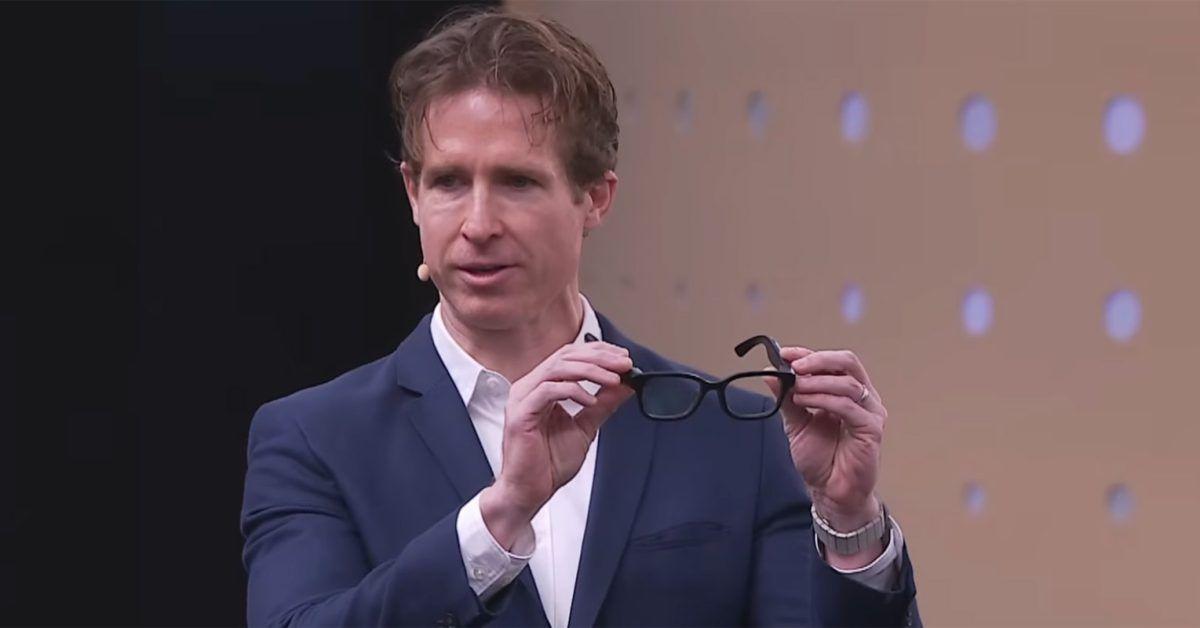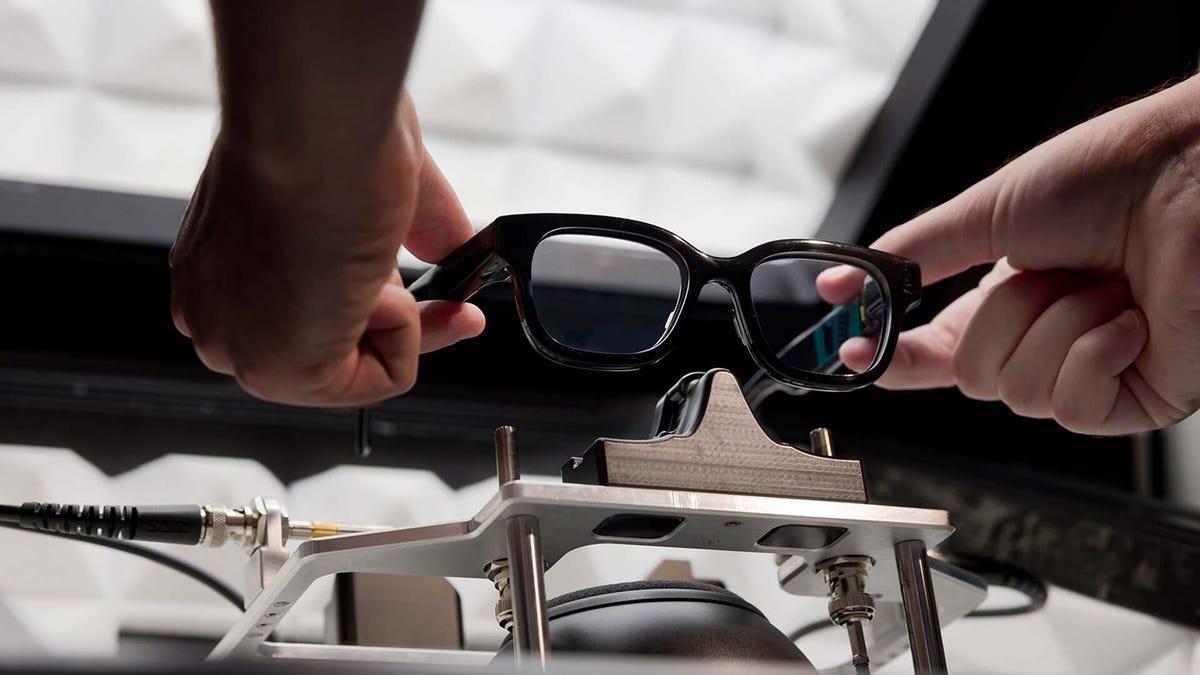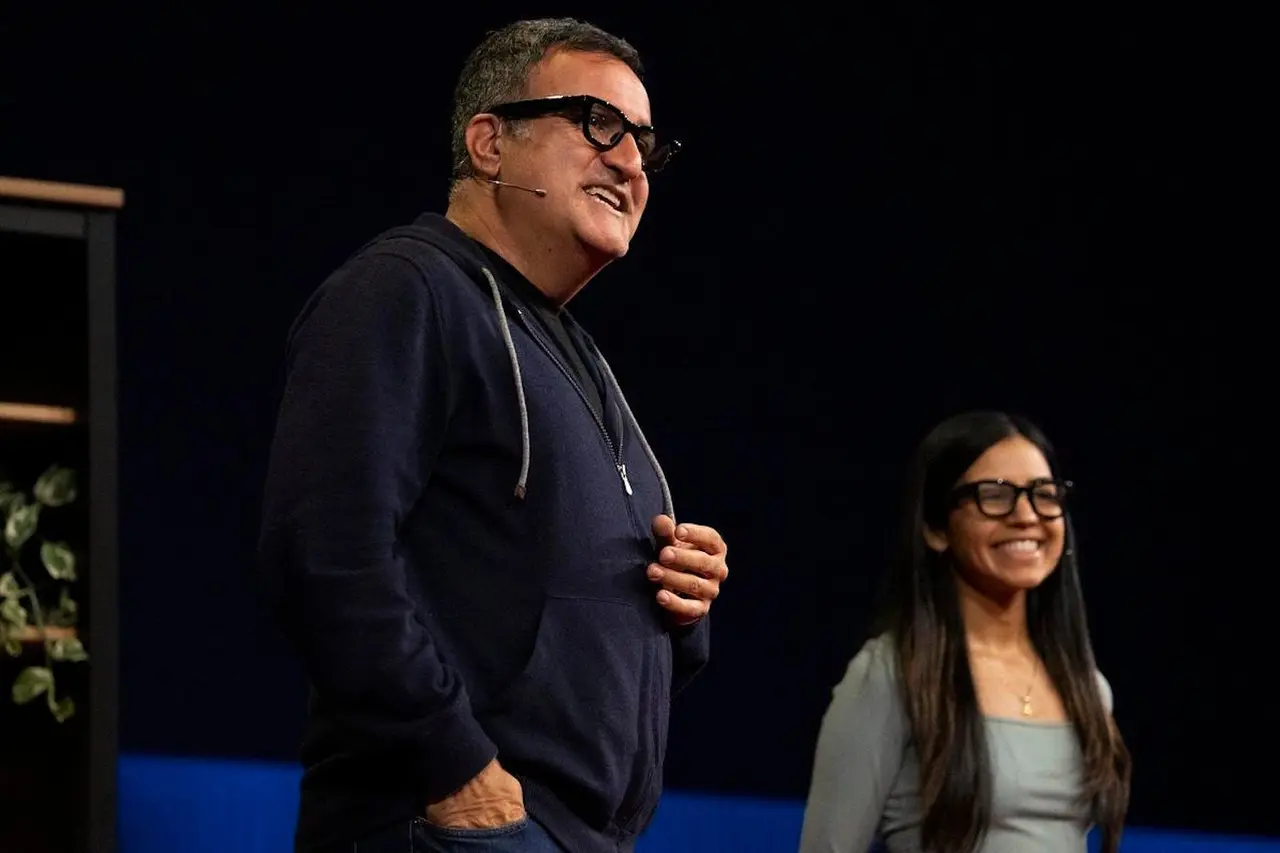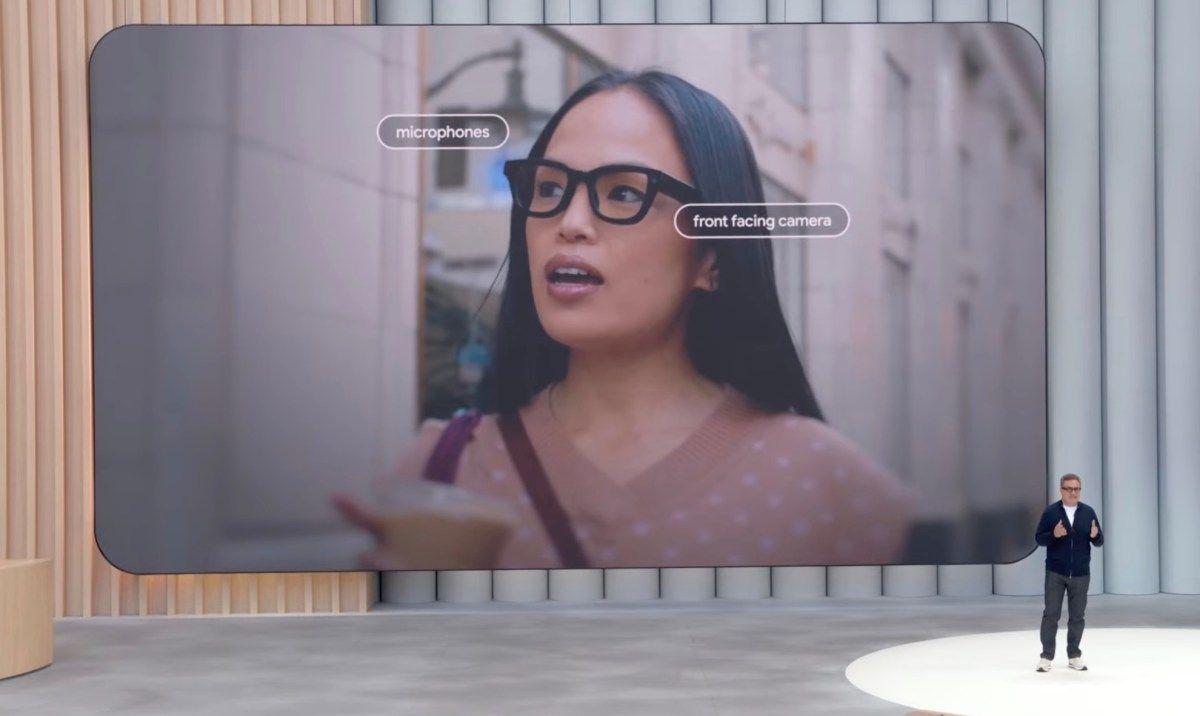Google and Magic Leap Unveil Android XR Smart Glasses Prototype with Extended Three-Year Partnership
5 Sources
5 Sources
[1]
Magic Leap and Google showcase what's next for AI smart glasses
The collaboration merges strong features from each company. Magic Leap plans to bring its over 15 years of experience in the AR space to the booming AI smart glasses market through a continued partnership with Google XR. Also: I wore the Meta Ray-Bans' successor for a month, and my buying verdict is two-fold On Wednesday, Magic Leap published a blog post detailing its plan for its next-generation AR glasses. In its collaboration with Google, the company said that it is focused on developing AR glasses prototypes that "balance visual quality, comfort, and manufacturability." A prototype showing the progress made by the two companies in developing the AR glasses was on display at the Future Investment Initiative (FII) stage. The glasses maintained the standard look of black-rimmed glasses, similar to those of the Meta Ray-Ban Wayfarers or the Android XR glasses prototype shown at Google I/O. Also: I tested the Oakley Meta Vanguard on a 5-mile walk - here's how it beat my Ray-Bans "What makes this prototype stand out is how natural it feels to look through," said Shahram Izadi, VP/GM of Google XR. "Magic Leap's precision in optics and waveguide design gives the display a level of clarity and stability that's rare in AR today." In particular, the company plans to combine Magic Leap's waveguides -- the company's technology that allows for the realistic and precise overlay of digital content on the physical world around you -- with Google's Raxium microLED light engine, which refers to display technology that is smaller, brighter, and lower-power, and ideal for in-lens smartglasses displays. Also: I wore smart glasses with xMEMS speakers and cooling fans - and wished my Ray-Bans had the same The companies first announced a multi-faceted, strategic technology partnership in May 2024, although their relationship precedes that. A major part of today's announcement was the extension of their collaboration through a three-year agreement. No additional information was shared regarding the roadmap or a potential release date.
[2]
Google shows off prototype Android XR glasses from extended Magic Leap deal [Video]
The Android XR floodgates finally cracked open this month with the debut of Samsung's Galaxy XR headset, but glasses are what we're all excited for. Google has now announced that its partnership with Magic Leap has been extended for the sake of bringing Android XR glasses to market. Google first announced a partnership with Magic Leap in 2024 for the purpose of building out AR optics and manufacturing, and that deal has now been extended. At a recent event, Magic Leap confirmed a three-year extension of the Google partnership, and also showed off a new prototype concept of a pair of Android XR glasses. The presentation was hosted by Magic Leap's CEO Ross Rosenberg and SVP Jade Meskill, as well as Google's Juston Payne (Senior Director of Product Management for XR) and showed off "the first prototype concept of our new work." It also went on to mention how the two companies are working together. Magic Leap and Google have recently extended our partnership with a three-year agreement. We're super excited to showcase to you the first prototype concept of our new work. Magic Leap is enabling clearer displays and comfortable form factors. Google has been redefining how AI creates new experiences. Together, we're changing the way we interact with the world. As noted by Android Central, a press release shared by Magic Leap adds some further technical details. This includes mentioning that Google's "Raxium microLED light engine" integrates with Magic Leap's tech to bring "digital content seamlessly into the world." As pictured above, the "display"portion of the lens is visible at some angles, but it's largely impossible to see. Magic Leap and Google will show an AI glasses prototype at FII that will serve as a prototype and reference design for the Android XR ecosystem. The demo shows how Magic Leap's technology, integrated with Google's Raxium microLED light engine, brings digital content seamlessly into the world. The prototypes worn on stage illustrate how comfortable, stylish smart eyewear is possible and the video showed the potential for users to stay present in the real world while tapping into the knowledge and functionality of multimodal AI. During the presentation, text on the nearby screens suggests that Magic Leap is mainly working with Google on the technology here, rather than bringing its own glasses to market. Magic Leap further hints at this in its press release, calling itself "an AR ecosystem partner" focused on "supporting global technology leaders that want to enter the AR market and accelerate the production of AR glasses." These prototype glasses look pretty similar to the ones that Google has been showing off for the past few months, with the same basic design and the same camera placement. That prototype was reportedly set to be released by Samsung sometime next year, but it seems they're stemming directly from Google's Magic Leap partnership.
[3]
Google and Magic Leap have been showing off a new Android XR smart glasses prototype
The prototype smart specs are similar to the Ray-Ban Meta glasses There's a bit of a buzz around Android XR (Extended Reality) right now: the Samsung Galaxy XR headset just got its official unveiling, and now Google and Magic Leap have been showing off a prototype pair of smart glasses running Android XR. Yes, that's the same Magic Leap that released an augmented reality headset several years ago, which arrived with a lot of hype but ultimately didn't prove to be a hit. Now the company is trying again, with Google on board too. The smart glasses were shown off at the Future Investment Initiative expo event in Riyadh, Saudi Arabia, as reported by Android Authority and others. It's the first time we've seen hardware from the Google and Magic Leap partnership announced last year. As per the press release, the device combines Magic Leap's waveguides and optics with Google's Raxium microLED light engine, resulting in visuals that can be put in front of the line of vision of the user. "The prototypes worn on stage illustrate how comfortable, stylish smart eyewear is possible and the video showed the potential for users to stay present in the real world while tapping into the knowledge and functionality of multimodal AI," says Magic Leap. As you might have guessed, Gemini AI is involved. One of the examples shown on stage was shopping for rugs: the smart specs were able to analyze the rugs that were in view, and answer questions about them. With cameras, mics, and speakers built into the glasses, this is all pretty similar to what we've seen before from Google's Project Astra and Ray-Ban Meta glasses, but it's interesting to see new hardware being shown off. There's no indication of when we might actually get to see these Android XR glasses launch though - these specs are very much at the prototype stage. Samsung has its own smart specs on the way, which are due in 2026.
[4]
Magic Leap and Google Show Off Android XR Smart Glasses Prototype - Phandroid
Magic Leap and Google recently showcased a prototype pair of Android XR smart glasses at the Future Investment Initiative event in Riyadh, offering a glimpse into what everyday augmented reality could actually look like. These glasses serve as both a working prototype and a reference design for the broader Android XR ecosystem, representing a significant step toward lightweight, all-day wearable AR. The glasses combine Magic Leap's advanced waveguide optics with Google's Raxium microLED light engine to deliver sharp, stable, and energy-efficient visuals that feel naturally anchored in the real world. This clarity and comfort aim to let users stay present in their environment while accessing digital overlays seamlessly, addressing one of the biggest complaints about earlier AR attempts. The on-stage demo highlighted AI-powered features through Gemini AI assistant analyzing scenes in real time, answering questions about surroundings, suggesting shopping options, or offering golf tips. This demonstrates how AI can integrate naturally into daily life rather than feeling like a gimmick you pull out occasionally. Magic Leap is now positioning itself primarily as an "AR ecosystem partner," focusing on supporting technology leaders like Google in bringing consumer-ready AR glasses to market rather than producing its own hardware. The partnership with Google has been extended for another three years, furthering their joint development of optics, display, and AI technology for Android XR smart glasses. This shift makes sense considering Google learned from its Google Glass mistakes and is now working with experienced partners like Warby Parker and Gentle Monster. Google is investing up to $150 million in Warby Parker to support these efforts. While these glasses are prototypes rather than immediate consumer products, they set a promising blueprint for future stylish, functional, and AI-enhanced AR eyewear. The Samsung Galaxy XR headset is currently the only device you can buy with Android XR, but expanding the platform to smart glasses seems like the natural progression.
[5]
Google, Magic Leap Unveil Android XR Glasses Prototype With In-Lens Display
Android XR prototype can understand real-time conversations Google and Magic Leap revealed a prototype of their new Android-powered XR glasses. This marks the first public showcase of Google's concept smart glasses since their brief appearance at Google I/O in May this year. AR glasses prototype combines Magic Leap's waveguide and optical technologies with Google's Raxium microLED light engine. The two companies also announced a renewed three-year collaboration to advance XR development. This unveiling comes a week after Samsung entered the Android XR space with the launch of its Galaxy XR headset. Android XR Smart Glasses Prototype At the Future Investment Initiative event in Riyadh, Google and Magic Leap showcased a prototype of their Android XR smart glasses. The prototype features thick frames to house onboard electronics. It has a camera, microphones, an in-lens display and speakers. While Magic Leap hasn't shared many technical details yet, the company did confirm that the glasses combine its proprietary waveguides and optics with Google's Raxium microLED light engine. "The two companies are developing display technologies that make all-day, wearable AR more achievable. Magic Leap's device services integrate display hardware to ensure visuals are stable, crisp, and clear", said Magic Leap in a release. Additionally, Magic Leap and Google have extended their partnership with a new three-year agreement. As part of this effort, Magic Leap said it will support global tech players aiming to enter the AR space, offering its expertise to accelerate the development and production of AR glasses. The on-stage demo showcases how the Android XR prototype understands real-time conversations and takes actions on the user's behalf with their permission. The Gemini AI can interpret and respond to real-world scenes in real time through the Android XR glasses. The smart glasses allow users to ask questions about what they're seeing and offer AI-powered, relevant answers to the wearers. The latest announcement closely follows Samsung's entry into the Android XR space with its Galaxy XR headset. It also runs on Google's new Android XR operating system and is priced at $1,799 (roughly Rs. 1,58,000) in the US, where is it available in a 16GB RAM + 256GB storage variant. Google previewed its Android XR Glasses at its Google I/O Developers Conference in California in May this year. The company has associated with Samsung, Gentle Monster, and Warby Parker to design smart glasses. During the first showcase, the company offered a demo of the live language translation feature. It can be used for making conversations, taking appointments, getting directions and capturing photos with the paired smartphone.
Share
Share
Copy Link
Google and Magic Leap showcased their first Android XR smart glasses prototype at the Future Investment Initiative, combining Magic Leap's waveguide technology with Google's Raxium microLED displays. The companies extended their partnership for three years to accelerate AR glasses development.
Partnership Extension and Strategic Collaboration
Google and Magic Leap have announced a significant expansion of their partnership with a three-year agreement extension, marking a crucial step forward in the development of consumer-ready augmented reality glasses. The collaboration, which was first established in May 2024, combines Magic Leap's extensive experience in AR optics with Google's advanced display technology and AI capabilities
1
. This extended partnership positions both companies to accelerate the development and production of Android XR smart glasses for the broader consumer market.
Source: Phandroid
Magic Leap is now repositioning itself as an "AR ecosystem partner," focusing on supporting global technology leaders who want to enter the AR market rather than developing its own consumer hardware
2
. This strategic shift allows the company to leverage its over 15 years of AR experience while enabling partners like Google to bring more polished products to market.Technical Innovation and Prototype Showcase
At the Future Investment Initiative event in Riyadh, Saudi Arabia, the companies unveiled their first working prototype of Android XR smart glasses, representing a significant milestone in their collaboration
3
. The prototype combines Magic Leap's proprietary waveguide technology with Google's Raxium microLED light engine, creating what Google XR VP Shahram Izadi described as displays with "a level of clarity and stability that's rare in AR today"1
.
Source: 9to5Google
The glasses maintain a conventional appearance similar to Ray-Ban Meta Wayfarers or standard black-rimmed glasses, addressing one of the key challenges in AR wearables: achieving a natural, socially acceptable form factor
4
. The prototype features integrated cameras, microphones, speakers, and an in-lens display system that allows digital content to be seamlessly overlaid onto the real world.
Source: ZDNet
AI Integration and Real-World Applications
The prototype demonstrates advanced AI capabilities through Google's Gemini AI assistant, which can analyze real-time scenes and provide contextual information to users. During the demonstration, the glasses showcased practical applications such as shopping assistance, where the AI could analyze rugs in view and answer questions about them, as well as providing golf tips and general scene analysis
3
.The AI integration allows users to ask questions about their surroundings and receive relevant, contextual responses while maintaining natural interaction with their environment
5
. This approach addresses previous criticisms of AR devices that felt disconnected from real-world usage patterns.Related Stories
Market Context and Future Outlook
This announcement comes at a pivotal time for the Android XR ecosystem, following Samsung's recent entry into the space with its Galaxy XR headset priced at $1,799
5
. Google has also established partnerships with fashion-forward companies including Warby Parker and Gentle Monster, with Google investing up to $150 million in Warby Parker to support AR glasses development efforts4
.While no specific release timeline has been announced for the consumer version of these glasses, the prototype serves as both a working demonstration and a reference design for the broader Android XR ecosystem. Samsung has indicated that its own smart glasses are expected to launch in 2026, suggesting that the market for consumer AR glasses is rapidly approaching commercial viability.
References
Summarized by
Navi
Related Stories
Google Unveils Advanced Android XR Smart Glasses Prototype at TED2025
11 Apr 2025•Technology

Google AI glasses set to launch in 2026 with Gemini and Android XR across multiple partners
08 Dec 2025•Technology

Google unveils Android XR updates with 2D to 3D conversion and AI glasses partnerships
02 Dec 2025•Technology

Recent Highlights
1
Google launches Gemini 3 Flash as default AI model, delivering speed with Pro-grade reasoning
Technology

2
OpenAI launches GPT Image 1.5 as AI image generator war with Google intensifies
Technology

3
OpenAI launches ChatGPT app store, opening doors for third-party developers to build AI-powered apps
Technology





